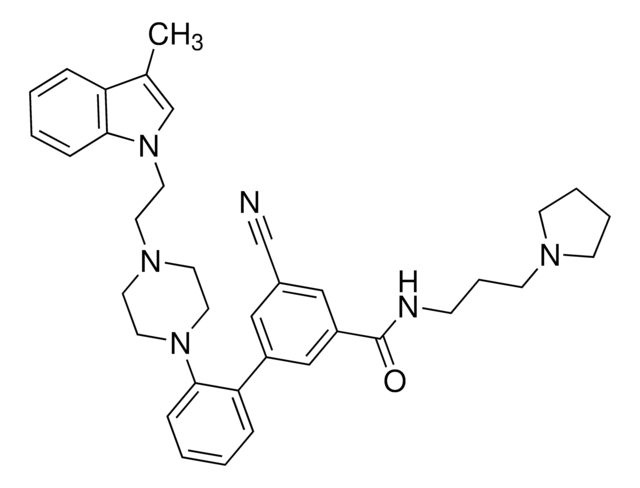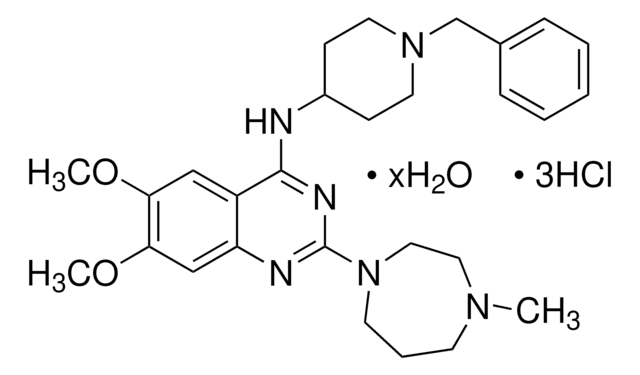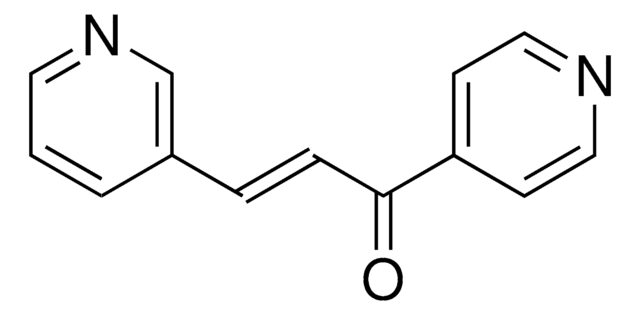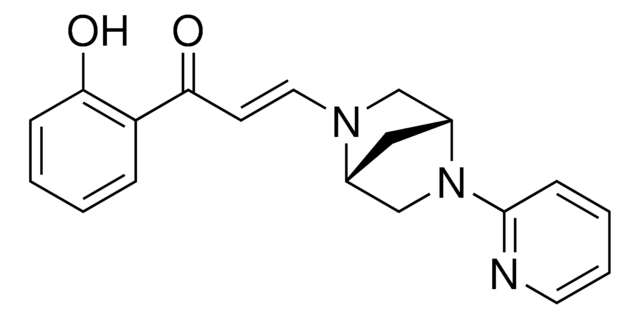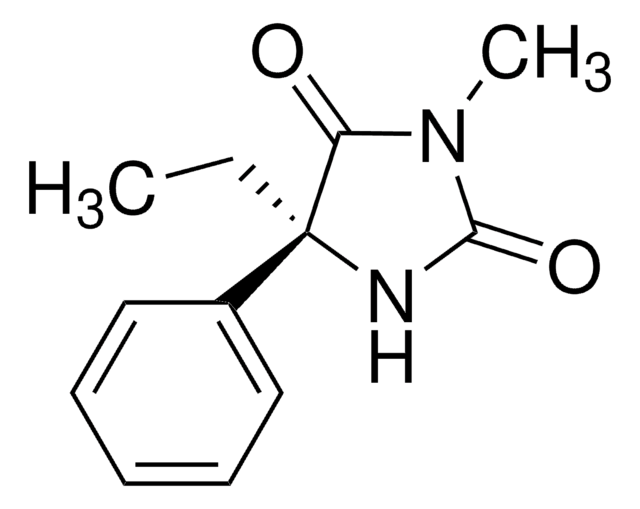Kluczowe dokumenty
SML1603
BAY-598
≥98% (HPLC)
Synonim(y):
(S)-N-[1-{N′-Cyano-N-[3-(difluoromethoxy)phenyl]carbamimidoyl}-3-(3,4-dichlorophenyl)-4,5-dihydro-1H-pyrazol-4-yl]-N-ethyl-2-hydroxyacetamide
About This Item
Polecane produkty
Poziom jakości
Próba
≥98% (HPLC)
Formularz
powder
aktywność optyczna
[α]/D -85 to -95°, c = 1 in methanol
kolor
white to beige
rozpuszczalność
DMSO: 25 mg/mL, clear
temp. przechowywania
2-8°C
ciąg SMILES
ClC1=C(Cl)C=C(C2=NN(/C(NC3=CC=CC(OC(F)F)=C3)=N\C#N)C[C@@H]2N(CC)C(CO)=O)C=C1
InChI
1S/C23H21Cl2F2N5O3/c1-2-16(20(34)11-33)17-10-32(31-21(17)13-6-7-18(24)19(25)8-13)23(29-12-28)30-14-4-3-5-15(9-14)35-22(26)27/h3-9,16-17,22,33H,2,10-11H2,1H3,(H,29,30)/t16?,17-/m1/s1
Klucz InChI
LOHNYXGTWKNYDF-ZYMOGRSISA-N
Powiązane kategorie
Działania biochem./fizjol.
BAY-369 jest kontrolą negatywną dla aktywnej sondy BAY-598. Aby poprosić o próbkę kontroli negatywnej z SGC, kliknij tutaj.
Aby dowiedzieć się więcej o innych sondach chemicznych SGC dla celów epigenetycznych, odwiedź sigma.com/sgc.
Cechy i korzyści
Inne uwagi
Hasło ostrzegawcze
Warning
Zwroty wskazujące rodzaj zagrożenia
Zwroty wskazujące środki ostrożności
Klasyfikacja zagrożeń
Acute Tox. 4 Oral
Kod klasy składowania
11 - Combustible Solids
Klasa zagrożenia wodnego (WGK)
WGK 3
Temperatura zapłonu (°F)
Not applicable
Temperatura zapłonu (°C)
Not applicable
Wybierz jedną z najnowszych wersji:
Certyfikaty analizy (CoA)
Nie widzisz odpowiedniej wersji?
Jeśli potrzebujesz konkretnej wersji, możesz wyszukać konkretny certyfikat według numeru partii lub serii.
Masz już ten produkt?
Dokumenty związane z niedawno zakupionymi produktami zostały zamieszczone w Bibliotece dokumentów.
Nasz zespół naukowców ma doświadczenie we wszystkich obszarach badań, w tym w naukach przyrodniczych, materiałoznawstwie, syntezie chemicznej, chromatografii, analityce i wielu innych dziedzinach.
Skontaktuj się z zespołem ds. pomocy technicznej